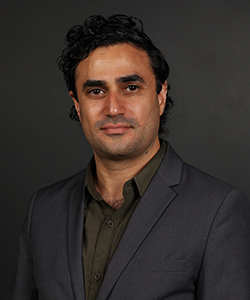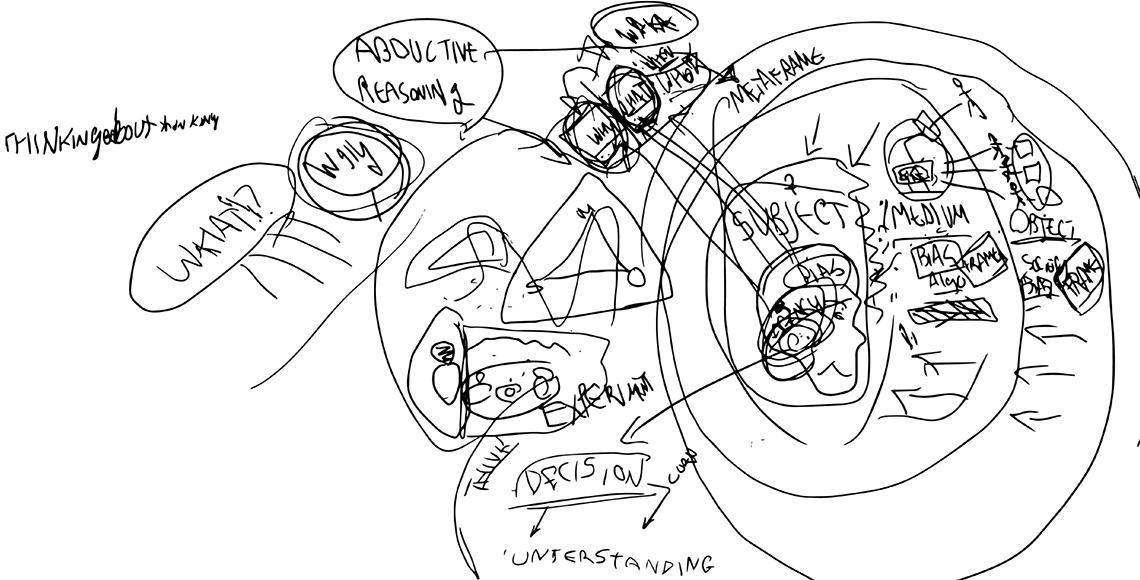
In the information age, where the boundaries between human cognition and artificial intelligence blur, iSchool assistant professor Alamir Novin delves into an intricate realm — Human-Computer Interaction. Novin’s research unveils the subtle yet pervasive biases embedded within algorithms governing our digital landscapes.
Novin challenges the “boxes” or “frames” confining our thinking. The labyrinth of biases Novin explores, whether cognitive, algorithmic, or societal, are intricately interwoven, shaping how we perceive information and influencing future generations’ learning processes.
Novin’s current research focuses on the symbiotic relationship between cognitive bias and computer algorithms within HCI. His research is shedding light on the often-overlooked algorithmic bias in technologies, revealing the unsettling reality of search engine algorithms — demonstrating how biases subtly sway perceptions by emphasizing certain search results over others.
His studies extend to individuals’ cognitive biases, particularly in the context of learning. Novin’s experiments expose students to various interfaces and search engines, revealing how cognitive biases can subtly alter their understanding of topics, even within well-informed demographics of students that have an extensive understanding of the topic being reported on.
“I look at students,” Novin says. “How are students learning about things? These are the same students that could go off and become the future biologists and scientists of our generation.”
In emphasizing bias impact on decision-making, Novin raises critical questions about biases’ long-term consequences, especially in shaping perspectives of future scientists and researchers, underscoring the nuanced relationship between algorithmic bias and human agency.
“In HCI, the medium is the computer and the object is the people on the internet who are informing you or the documents that the people wrote that the subject is reading,” he says. “The subject holds the cognitive bias, the medium holds the algorithmic bias, and the object holds the social bias. The bias within the object contributes to the medium. Everything has a bias, so you can never get rid of them. The measure is when it becomes an error. This is because it can affect decision making.”
Novin advocates for metacognition as a powerful and transformative tool to navigate the biases embedded in digital interfaces. Metacognition — often encapsulated in the concept of “thinking about thinking” — emerges as a guiding philosophy for individuals seeking to comprehend and mitigate biases in their decision-making processes, he says.
At its core, metacognition involves a heightened awareness of cognitive processes – a reflective and introspective practice where individuals deliberately examine how they process information, interpret data, and form conclusions.
Novin contends that this deliberate act of self-awareness is pivotal in mitigating the impact of biases. It is not merely about absorbing information but about understanding the cognitive processes involved in that absorption.

“Thinking about thinking” becomes a mantra for navigating the labyrinth of biases in the digital age. This metacognitive approach is not passive but active engagement with one’s thought processes.
By questioning the framing of information, “individuals can understand that when they focus on a topic of information, they are excluding other information,” Novin says. Navigating the vast sea of information online, this self-reflective practice allows people to question why certain information is presented and “framed,” how it is processed, and what biases may be at play.
When people actively engage in “thinking about thinking,” they become architects of their cognitive landscapes, capable of discerning between genuine understanding and the subtle influence of biases.
This metacognitive approach is particularly potent in an era where digital interfaces serve as primary conduits for information consumption. As individuals traverse the complex terrain of online platforms, they are bombarded with diverse perspectives and information. Metacognition empowers individuals to discern the “framing” of this information, question the algorithms shaping their digital experience, and consciously choose how to process and internalize the content before them, he says.
Novin’s advocacy for metacognition extends beyond academia into a broader philosophy for navigating the complexities of the information age. He calls for individuals to actively participate in their own learning, to constantly question and refine their thought processes, and to cultivate a mindset that is resilient to the subtle biases that permeate our digital existence.
As we integrate metacognition into our information consumption approach, we become more discerning learners and contribute to the broader discourse on bias and its implications. By encouraging individuals to actively engage in “thinking about thinking,” Novin offers a pathway toward a future where awareness and critical thinking serve as the cornerstone of a digitally literate society.
